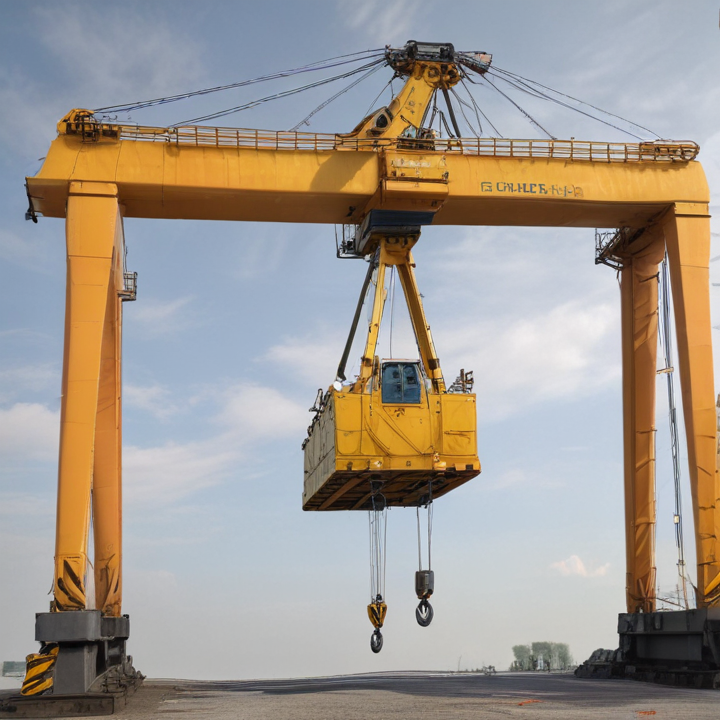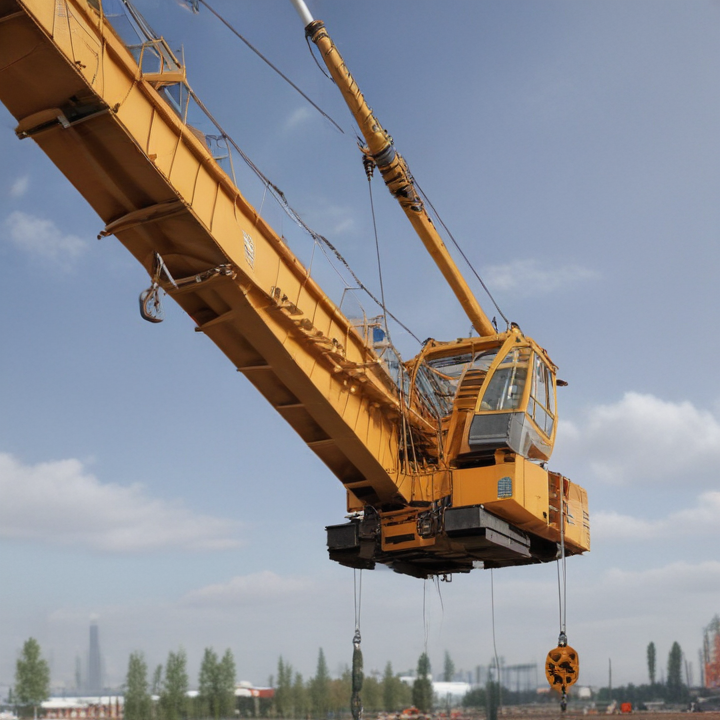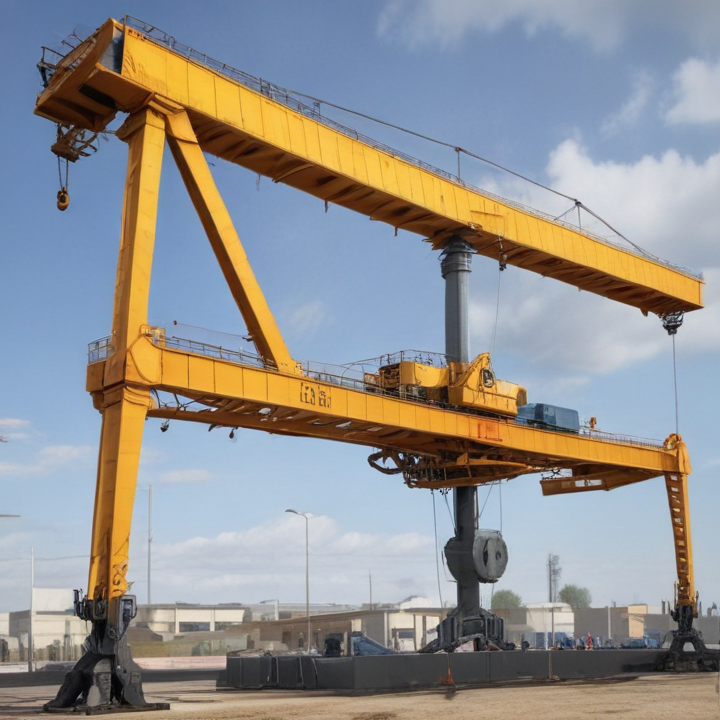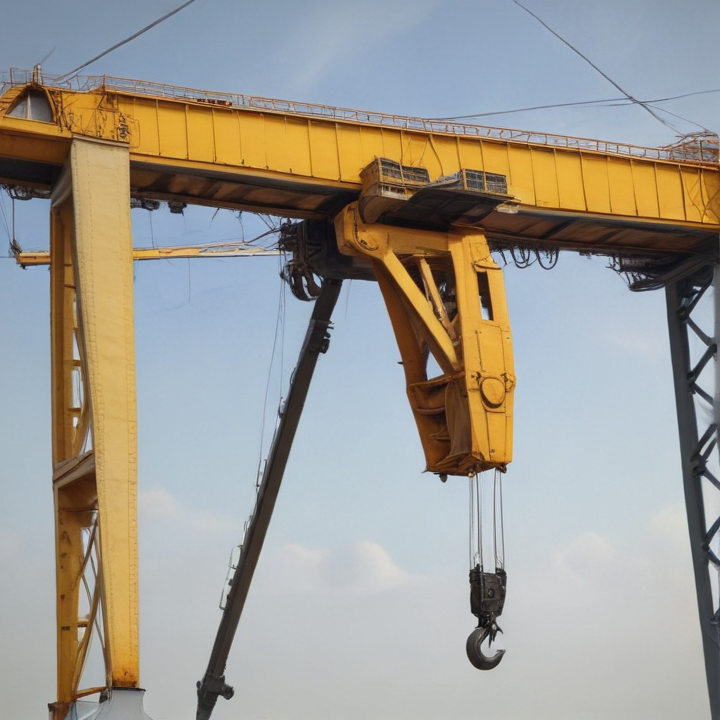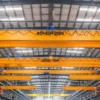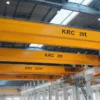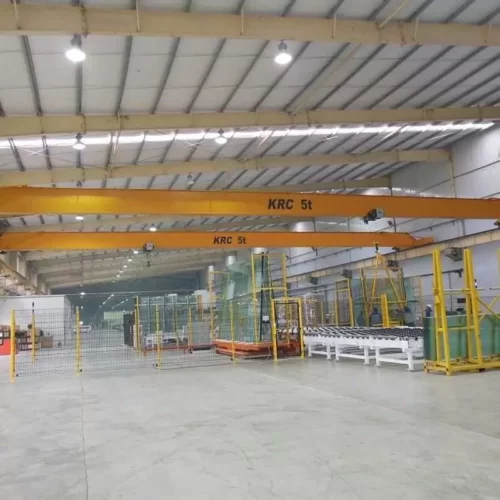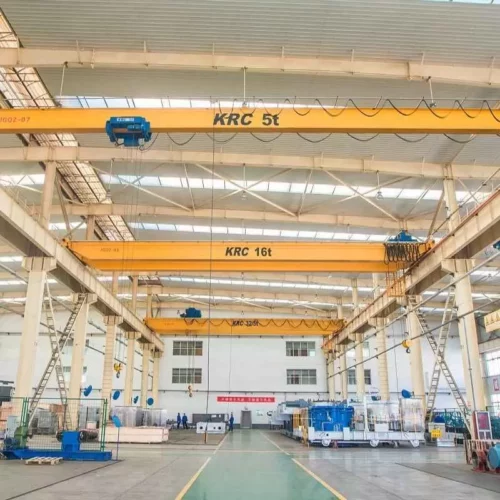underslung crane Safety Certifications
Underslung cranes, which are typically used in various industrial settings for lifting and transporting heavy materials, must comply with multiple safety standards and certifications to ensure safe operation and to mitigate the risks of accidents. Here are some key safety certifications and standards relevant to underslung cranes:
1. OSHA (Occupational Safety and Health Administration): In the United States, OSHA sets forth regulations in its Cranes and Derricks standards (29 CFR 1926 Subpart CC) which outline safety requirements for crane operation, including operator qualifications, regular inspections, and maintenance protocols.
2. ASME B30.11: This standard by the American Society of Mechanical Engineers specifies safety guidelines for overhead and gantry cranes, including underslung types. ASME B30.11 covers construction, installation, inspection, testing, maintenance, and operation.
3. CMAA (Crane Manufacturers Association of America): The CMAA Specification No. 74, known as “Specification for Top Running & Under Running Single Girder Electric Traveling Cranes Utilizing Under Running Trolley Hoist,” provides detailed criteria for the design and classification of underslung cranes.
4. ISO 9001: Although not specific to cranes alone, ISO 9001 certification ensures that the manufacturing process and quality management systems of the crane meet rigorous international standards, indirectly ensuring safety.
5. EN 15011: In Europe, the EN 15011 standard applies to cranes and introduces requirements and procedures for design, construction, testing, and maintenance to ensure safe operation.
6. LOLER (Lifting Operations and Lifting Equipment Regulations): In the UK, LOLER regulations require that all lifting equipment, including underslung cranes, are strong and stable enough for the particular use and marked to indicate safe working loads.
Adherence to these certifications and standards is vital for safe crane operation. Regular inspections, proper training for operators, and compliance with these safety guidelines can significantly reduce the risk of accidents and ensure a safe working environment.
List Reference Technical Parameters of “underslung crane”
Underslung cranes, also known as underslung bridge cranes, are a type of material handling equipment designed with the crane’s runway track supported by the building’s roof structure rather than columns. Below are the key technical parameters for underslung cranes:
1. Load Capacity: The maximum weight the crane can lift, typically ranging from 1 to 10 tons, but can be higher depending on the design.
2. Span: The distance between the crane’s runway rails. Span lengths can vary but are often between 6 to 30 meters.
3. Lift Height: The maximum vertical distance the hook can travel, generally between 6 to 18 meters, but can be customized as needed.
4. Travel Speed: The speed at which the crane can move along the runway. This can range from 20 to 60 meters per minute for the crane itself and 5 to 20 meters per minute for the hoist/trolley.
5. Duty Class/Service Class: Defines the crane’s operating conditions, including load cycles and severity of service. Classified by standards such as FEM, ISO, or CMAA, ranging from light (Class A) to heavy duty (Class E or higher).
6. Power Supply: Electrical requirements typically in the range of 380-480V, 3-phase, 50/60 Hz. Power is supplied via conductor bars, festoon systems, or cable reels.
7. Control System: Options include pendant controls, wireless remote controls, or cabin controls, allowing for precision in operation.
8. Runway System: The supporting structure for the crane, mounted to the building ceiling or a dedicated support structure. It includes tracks or rails for crane movement.
9. Hoist Type: Often an electric hoist designed for heavy-duty use, with various configurations like single or double fall.
10. Structural Materials: Typically, made from robust steel materials designed for durability and reduced deflection under load.
Each of these parameters is crucial in selecting the right underslung crane for specific industrial applications, ensuring efficient, safe, and reliable operations.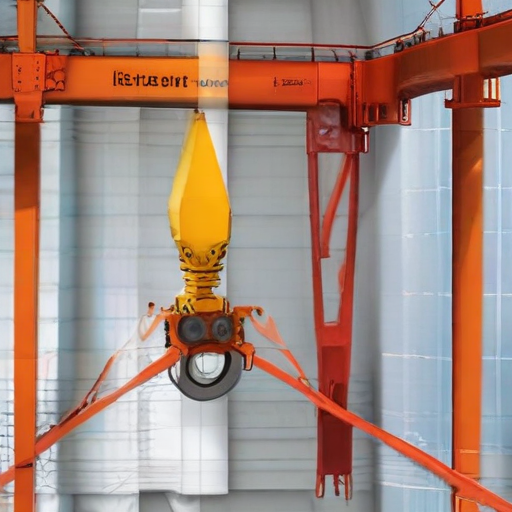
List Product features of “underslung crane”
An underslung crane, also known as an under-running crane, is a type of overhead crane where the bridge is suspended, traveling on the bottom flange of the runway girders. This design offers several distinctive features that make it suitable for various applications:
1. Compact Design:
Underslung cranes take advantage of minimal headroom, making them ideal for facilities with low ceilings or confined vertical space.
2. Space Efficiency:
The crane’s compact nature allows it to be installed close to the roof, which maximizes the useable workspace on the ground level for other operations.
3. Flexible Installation:
These cranes can be easily integrated into existing structures. They often run along the facility’s ceiling, making installation less intrusive.
4. Enhanced Maneuverability:
Their design often enables superior maneuverability, with the ability to service areas that might be inaccessible for other types of cranes.
5. Dual Rail Systems:
Many underslung cranes feature dual rail systems, providing additional stability and support for heavier loads.
6. Customization:
They are highly adaptable, with options for customizing spans, lifting capacities, and speeds to fit specific operational needs.
7. Ease of Modification:
Underslung cranes can be more easily modified or expanded compared to their top-running counterparts, making future upgrades more straightforward.
8. Reduced Structural Loads:
Due to their under-running nature, these cranes often impose less load stress on the building structure, potentially reducing construction and maintenance costs.
9. High Precision:
Many models offer high-speed operation with precision controls, which is crucial for tasks requiring meticulous material handling.
10. Safety Features:
Modern underslung cranes include various safety mechanisms, such as overload protection, emergency stop buttons, and travel limit switches, to ensure safe operation.
11. Versatility:
These cranes are suitable for diverse industrial applications, including manufacturing, assembly, warehouse management, and maintenance facilities.
12. Lower Maintenance:
With fewer components in the runway systems as compared to top-running cranes, maintenance can be simpler and less costly.
In summary, underslung cranes offer a space-efficient, flexible, and adaptable solution for overhead material handling in various industrial settings. Their precision, safety features, and ease of installation make them a preferred choice for many businesses.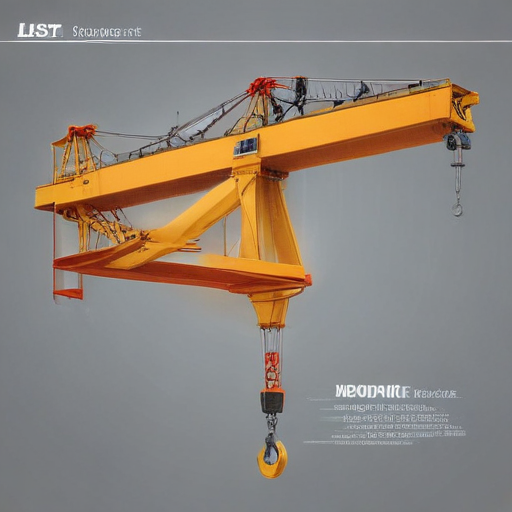
List Various Types of “underslung crane”
An underslung crane, also known as an under-running crane, operates with its hoist and trolley running along the bottom flange of the runway beams. Here are various types:
1. Single Girder Underslung Crane:
– Description: Features a single girder bridge with a trolley and hoist running along the bottom flange.
– Usage: Ideal for light to moderate lifting operations with lower weight capacities and shorter spans.
2. Double Girder Underslung Crane:
– Description: Consists of two girder bridges for enhanced strength. The hoist runs on rails installed on top of the girders.
– Usage: Suitable for heavier loads and longer span requirements while maintaining a low headroom design.
3. Low Headroom Underslung Crane:
– Description: Designed to maximize lift height by minimizing the distance between the hoist and the runway beam.
– Usage: Perfect for environments with limited vertical space, ensuring efficient use of height.
4. Articulating Underslung Crane:
– Description: Equipped with a flexible joint mechanism, allowing for movement around obstacles and over larger areas.
– Usage: Effective in complex layouts where maneuverability is crucial.
5. Explosion-Proof Underslung Crane:
– Description: Built to operate in hazardous environments where the presence of flammable gases or dust can lead to explosions.
– Usage: Used in industries like chemical manufacturing, oil refineries, or mining.
These various types of underslung cranes cater to different industrial needs, from light assembly work to heavy manufacturing, ensuring optimal performance and safety in diverse operational settings.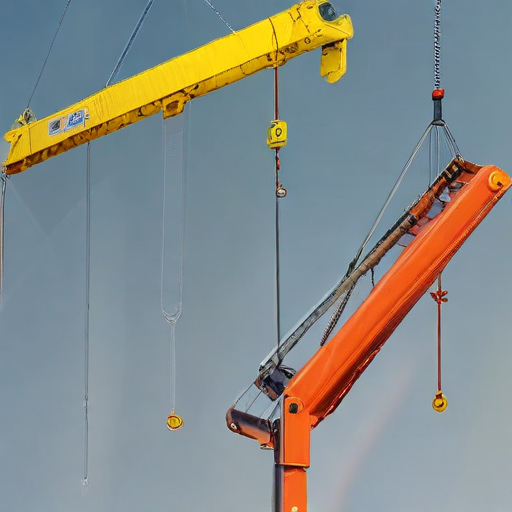
List Application of “underslung crane”
An underslung crane, also known as an underslung or underhung bridge crane, is a versatile lifting device where the bridge is suspended from the bottom flange of the runway beams, which are usually supported by the building’s roof or ceiling structure. This type of crane is particularly useful in scenarios where headroom is limited or where supporting columns must be minimized. Here are various applications of underslung cranes:
1. Manufacturing Facilities: Underslung cranes are widely used in automotive, aerospace, and electronics manufacturing. They efficiently handle parts, tools, and assemblies, facilitating streamlined production processes.
2. Warehousing and Distribution: These cranes assist in the movement of goods within confined spaces, ensuring maximized storage capacities and improved inventory management.
3. Textile Industry: In textile plants, underslung cranes move large rolls of fabric and other materials, optimizing space and improving workflow within the production line.
4. Shipbuilding: Utilized for precise lifting and positioning of heavy ship components, underslung cranes are integral to the efficient assembly and repair of vessels.
5. Maintenance Workshops: These cranes enable the lifting and movement of heavy machinery and components, enhancing maintenance efficiency and safety.
6. Aviation: In aircraft maintenance hangars, underslung cranes transport large and delicate aircraft parts, aiding in repair and upkeep operations.
7. Food and Beverage Industry: For plants with stringent hygiene standards, these cranes aid in moving heavy equipment and bulk materials without occupying floor space.
8. Pharmaceutical Manufacturing: Ensuring cleanroom compliance, underslung cranes handle materials and equipment efficiently while maintaining spatial constraints.
9. Steel Industry: Essential for handling raw materials and finished products, these cranes optimize space usage and aid in seamless material flow.
10. Printing Industry: They facilitate the handling of heavy paper rolls and printing machinery parts in confined spaces, thus supporting uninterrupted production.
Overall, the flexibility and space-saving design of underslung cranes make them invaluable across diverse industries, particularly in environments where floor space and headroom are at a premium.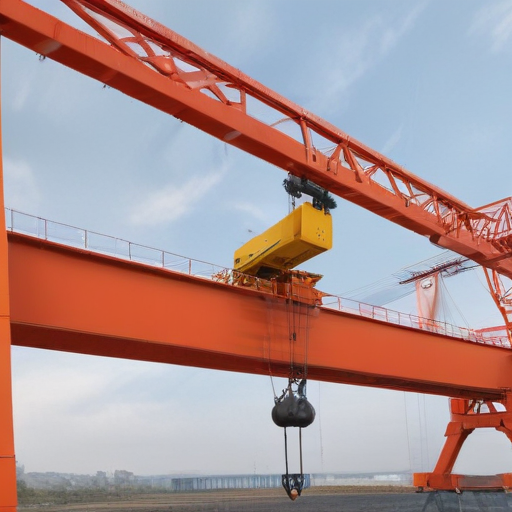
List Buyer Types of “underslung crane”
When it comes to the procurement of underslung cranes, various buyer types typically seek these specialized lifting systems for their unique needs. Underslung cranes differ from conventional overhead cranes because their main bridge girder is supported from the roof structure rather than an independent column structure. Here are the primary buyer types:
1. Manufacturing Industries:
– Automotive Manufacturers and Electronics Assembly Plants often use underslung cranes for moving heavy components through various stages of production efficiently.
2. Warehousing and Distribution Centers:
– These facilities use underslung cranes for loading and unloading heavy pallets, machinery, and other large items to optimize space and improve logistics operations.
3. Construction Companies:
– Construction firms utilize underslung cranes for precise positioning of construction materials and equipment within confined spaces, both in new construction and renovation work.
4. Steel and Metal Fabrication Shops:
– Such industries need robust materials handling solutions like underslung cranes for handling heavy metal sheets, beams, and fabricated components.
5. Aerospace and Automobile Sector:
– These sectors demand high precision for moving large, delicate sections of aircraft and automobiles during assembly, making underslung cranes a vital tool.
6. Ports and Shipping Yards:
– These environments require efficient handling of containers and bulky goods, tasks for which underslung cranes are well-suited due to their load-bearing capabilities.
7. Power Generation Plants:
– Facilities, including nuclear, hydro, and thermal power plants, use underslung cranes to manage heavy turbines, gears, and other critical components.
8. Railroad and Transportation Maintenance:
– Maintenance depots for trains and subways employ underslung cranes for repairs and upgrades to railway cars and infrastructure.
9. Research Laboratories and Custom Machinery Manufacturers:
– These buyers often need precise lifting solutions for the assembly of delicate machinery and experimental setups in limited space.
Understanding the specific needs of these varied buyer types can help in tailoring the design and features of underslung cranes to meet their distinct operational requirements.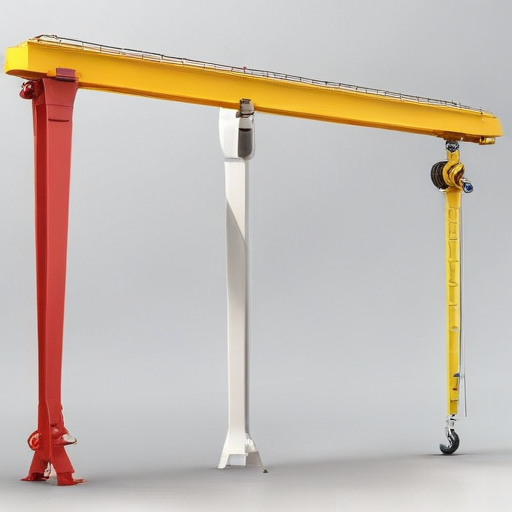
List “underslung crane” Project Types for Different Industries
Project Types Using Underslung Cranes Across Different Industries
1. Manufacturing Industry
– Assembly Lines: In automotive or electronics manufacturing, underslung cranes span across assembly lines to transfer components seamlessly.
– Tooling and Maintenance: Utilized for lifting heavy tools or machinery for repairs and maintenance operations within confined spaces.
2. Warehouse and Logistics
– Material Handling: Facilitates the efficient movement of goods and materials within storage facilities, often where overhead space is limited.
– Sorting Centers: Used in postal and courier services to sort packages swiftly, ensuring timely dispatch.
3. Aerospace Industry
– Component Transfer: Essential for the precision handling of delicate and large components such as wings and fuselage sections within tight manufacturing spaces.
– Maintenance Bays: Supports routine and specialized aircraft maintenance by lifting engines and other heavy parts.
4. Marine and Shipbuilding
– Component Installation: Assists in installing heavy components like engines and ship sections in tight construction areas.
– Cargo Handling: Facilitates the loading and unloading of goods in shipyards, especially where space constraints limit traditional crane use.
5. Automotive Industry
– Body Shops: Utilized for lifting car bodies and components during the manufacturing process.
– Engine Assembly: Assists in the highly precise placement of engines and other large automotive parts.
6. Chemical and Pharmaceutical
– Processing Plants: Enables the safe and efficient handling of chemicals and heavy equipment within compact facilities.
– Clean Rooms: In pharmaceutical production, used for moving heavy containers while maintaining sterile conditions.
7. Food and Beverage
– Processing Lines: Supports the lifting and movement of large food processing equipment and containers in constrained spaces.
– Packaging: Helps in transporting heavy packaging materials and finished products within tight packing facilities.
8. Energy Sector
– Wind Turbine Assembly: Essential for the handling and assembly of large, heavy components in confined wind turbine assembly sites.
– Power Plants: Used to move heavy equipment and materials in congested power plant environments.
Conclusion:
Underslung cranes are invaluable across various industries where overhead space is restricted, providing efficient material handling while conserving space and increasing operational efficiency.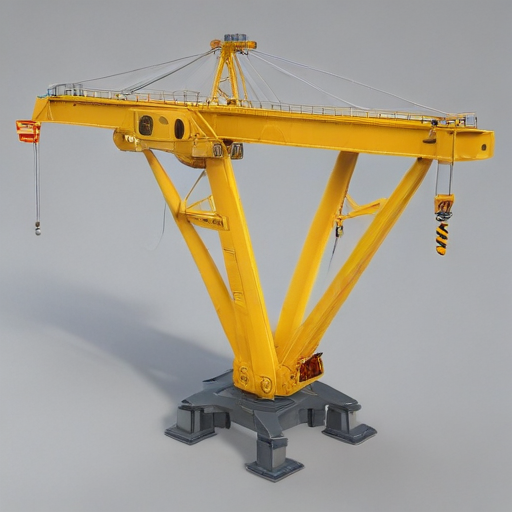
underslung crane Accessories Upgrades and Custom Manufacturing Options
Underslung cranes, known for maximizing workspace efficiency, can be significantly enhanced with various accessories, upgrades, and custom manufacturing options. These enhancements not only boost crane performance but also ensure optimal safety and efficiency.
Accessories:
1. Remote Controls: Wireless remote controls enable operators to manage the crane from a distance, improving safety and maneuverability.
2. Load Indicators: Digital load indicators provide real-time weight measurements, preventing overloading and enhancing safety.
3. Anti-Sway Systems: These systems minimize load swing during transit, improving precision in load placement.
4. Lighting Units: Integrated LED lights improve visibility, ensuring safer operations in dimly lit environments.
5. Cameras: Onboard cameras offer better visibility of the load and surroundings, aiding in precise handling.
Upgrades:
1. Variable Speed Drives: These allow for smooth starting and stopping, reducing wear and tear on mechanical components.
2. Automated Positioning Systems: Use GPS or laser guidance for precise load placement, enhancing operational efficiency.
3. Noise Reduction Features: Implementing quieter motors and vibration dampeners make for a more comfortable working environment.
4. Enhanced Safety Systems: Incorporate emergency stop buttons, motion detectors, and limit switches to prevent accidents.
Custom Manufacturing Options:
1. Capacity Customization: Tailor the crane’s lifting capacity to specific operational needs, ranging from a few tons to several hundred.
2. Span and Height Modifications: Adjust span and lifting height based on workspace dimensions to maximize coverage and utility.
3. Weatherproofing: For outdoor applications, cranes can be built with weatherproof materials and coatings to withstand harsh environments.
4. Specialized Hooks and Grabs: Design hooks, grabs, or lifters specific to the materials being handled, such as coils, pipes, or bulky items.
5. Modular Designs: Facilitates easy expansion or reconfiguration of the crane setup in the future according to operational changes.
These enhancements can transform a standard underslung crane into a highly specialized and efficient piece of equipment, tailored to meet the precise demands of any industrial operation.
List Quality Control and The Manufacturing Process of “underslung crane”
Manufacturing Process of Underslung Crane
1. Design and Engineering:
– Requirement Analysis: Define load capacities, span lengths, and operational environment.
– 3D Modeling & Simulation: Design the crane using CAD software to simulate stress and load distribution.
2. Material Selection:
– Choose high-strength steel or equivalent for main components like girders and end trucks.
– Select appropriate materials for electrical and control systems.
3. Component Manufacturing:
– Fabrication: Cut, shape, and weld steel plates and sections to form the mainframe.
– Machining: Precision-machine parts to ensure alignment and fit.
– Electrical Systems: Assemble motor controls, wiring, and safety devices.
4. Assembly:
– Fit and secure the hoist to the main girder.
– Integrate the trolley mechanism and end trucks.
– Install electrical systems and perform initial wiring.
5. Surface Treatment:
– Cleaning: Remove impurities like rust and oil from metal surfaces.
– Painting: Apply corrosion-resistant coatings.
6. Installation:
– Transport and install the crane at the operational site.
– Ensure proper alignment and secure fixation.
Quality Control in Underslung Crane Manufacturing
1. Design Verification:
– Validate designs through CAD simulations and stress analysis.
– Cross-check designs against industry standards and customer requirements.
2. Material Inspection:
– Verify material certifications for compliance.
– Conduct physical and chemical tests to ensure material integrity.
3. Process Monitoring:
– Implement in-process inspections during fabrication and machining.
– Use precision measuring tools to check critical dimensions.
4. Assembly Inspection:
– Conduct alignment checks and ensure proper assembly of components.
– Verify the electrical system’s functionality.
5. Performance Testing:
– Load testing to ensure the crane can handle its rated capacity.
– Run operational tests to check movement, braking, and hoisting mechanisms.
6. Final Inspection & Certification:
– Conduct a comprehensive final inspection covering all aspects of the crane.
– Issue quality certification documenting compliance with standards.
By maintaining a stringent quality control protocol throughout the manufacturing process, underslung cranes can deliver reliability and safety in their operational lifespan.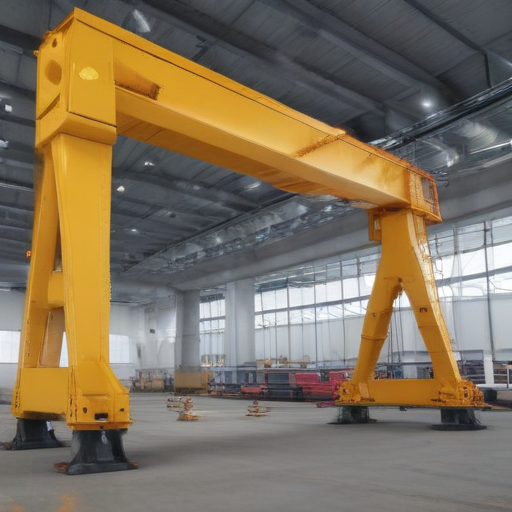
How to use “underslung crane”
An underslung crane, also known as an underslung or underhung bridge crane, is a type of overhead crane that operates on tracks mounted to the underside of a runway or ceiling structure. Here’s a step-by-step guide on how to use an underslung crane:
Preparation
1. Inspection: Before use, conduct a comprehensive inspection to ensure all components, including the hoist, trolley, and runway, are in safe condition. Check for any signs of wear, damage, or irregularities.
2. Training: Ensure the operator is adequately trained and familiar with the crane’s controls, safety mechanisms, and load-lifting procedures.
Operation
3. Load Securing: Attach the load securely to the crane’s hoist using appropriate rigging equipment. Check that the load is balanced and all connections are secure.
4. Control: Use the crane’s control pendant or remote control to operate. Familiarize yourself with buttons or levers for lifting, lowering, and moving the load.
5. Lifting: Gradually lift the load a few inches to ensure it’s properly secured and balanced. If the load is stable, continue lifting to the desired height.
6. Movement: Carefully maneuver the crane to transport the load. Use smooth, controlled movements to prevent swaying or sudden shifts.
– Trolley Motion: Move the trolley along the bridge runway.
– Bridge Motion: Move the entire bridge along the crane runway.
7. Lowering: Once the load reaches its destination, slowly lower it into place. Ensure you have a clear view and that the area is safe and free of obstructions.
Safety Tips
– Load Limits: Never exceed the crane’s load capacity.
– Communication: Maintain clear communication with nearby personnel during operation.
– Emergency Procedures: Be aware of emergency stop functions and procedures in case of malfunctions.
Post-Operation
8. Inspection: After completing the lifting task, conduct a post-operation inspection to check for any potential wear or damage.
9. Maintenance: Regularly perform maintenance as recommended by the manufacturer to ensure the crane remains in optimal working condition.
By following these steps and adhering to safety guidelines, an underslung crane can be operated efficiently and safely.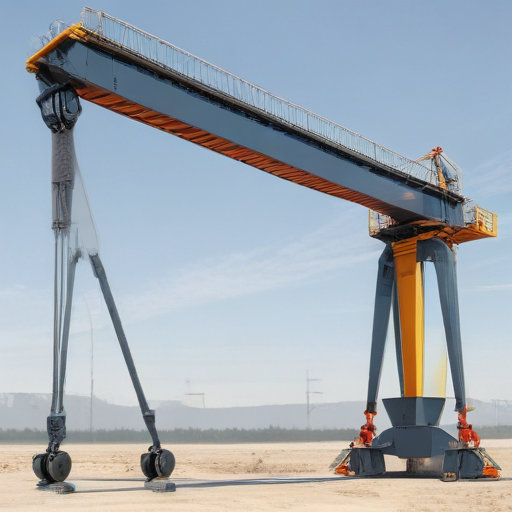
“underslung crane” Comparative Analysis
An underslung crane, also known as an under-running crane, is a type of overhead crane where the end trucks run on the bottom flange of a runway beam, rather than on the top flange as in a top-running crane. Here’s a concise comparative analysis of underslung cranes relative to top-running cranes:
Installation and Space Utilization:
– Underslung Cranes: Better suited for low-headroom applications since the crane girders are suspended under the runway beams, allowing optimal use of vertical space. Ideal for buildings with limited ceiling height.
– Top-running Cranes: Require more vertical space due to the crane girders running on top of the runway beams. Suitable for facilities with ample headroom.
Support Structure and Flexibility:
– Underslung Cranes: Typically supported by the roof structure, saving floor space. They can navigate tighter spaces and uniquely configured workstations due to their flexible mounting options.
– Top-running Cranes: Often require a robust support system, including columns which can reduce available floor space. Designed for straight, unobstructed paths with less flexibility in layout.
Load Capacity and Stability:
– Underslung Cranes: Generally have lower load capacities than top-running cranes due to structural limitations. However, they provide adequate stability for smaller to medium load applications.
– Top-running Cranes: Capable of handling heavier loads and spanning larger areas due to their design and robust support system, making them suitable for heavy-duty applications.
Cost and Maintenance:
– Underslung Cranes: Generally more economical in terms of initial setup and installation due to less stringent structural requirements. Easier and less costly to maintain.
– Top-running Cranes: Higher initial investment due to the need for stronger support structures and more substantial installation processes. Maintenance could be more challenging and costly due to difficult access points.
In conclusion, the choice between underslung and top-running cranes hinges on factors like load capacity, available headroom, workspace configuration, and budget constraints. An underslung crane is advantageous in compact spaces with moderate lifting needs, while a top-running crane is preferable for heavy-duty applications requiring higher load capacities and greater structural support.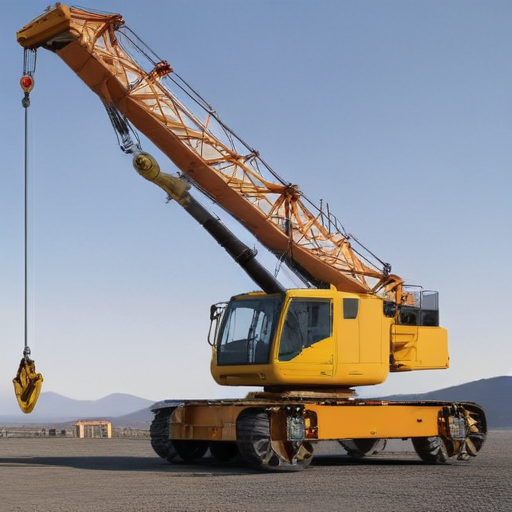
“underslung crane” Warranty and Support
Warranty and Support for Underslung Cranes
When investing in an underslung crane, it is crucial to consider the warranty and support services provided by the manufacturer to ensure long-term operational efficiency and reliability. A comprehensive warranty and robust support system can greatly impact the lifespan and functionality of the crane.
Warranty
Most reputable manufacturers offer a warranty period that typically ranges between one to three years, covering defects in materials and workmanship under normal use and conditions. The warranty should ideally include:
– Parts and Components: Coverage for critical crane parts such as motors, hoists, and control systems.
– Labor: Some warranties may include the cost of labor for repairs within the stipulated period.
– Exclusions: It is important to understand what the warranty does not cover, such as wear and tear components, misuse, or damages resulting from improper maintenance.
Support
Comprehensive support services are pivotal for maintaining optimal performance and minimizing downtime. Look for manufacturers that offer:
– Technical Assistance: Access to a team of skilled technicians who can address operational and troubleshooting questions.
– Maintenance Packages: Preventive maintenance plans that include regular inspections, adjustments, and parts replacement to ensure the crane remains in peak working condition.
– Training: Operator training programs to ensure safe and efficient use of the crane.
– 24/7 Support: Availability of around-the-clock support to handle any urgent issues that may arise.
Customer Service
Excellent customer service is vital for a seamless ownership experience. Ensure that the manufacturer provides:
– Quick Response Time: Rapid response to service requests and inquiries.
– Local Support Centers: Availability of local service centers or authorized service providers for prompt assistance.
– Spare Parts Availability: Easy access to genuine spare parts to reduce repair time and enhance the crane’s longevity.
By carefully evaluating the warranty and support services, you can make an informed decision and ensure that your underslung crane remains a valuable asset for your operations.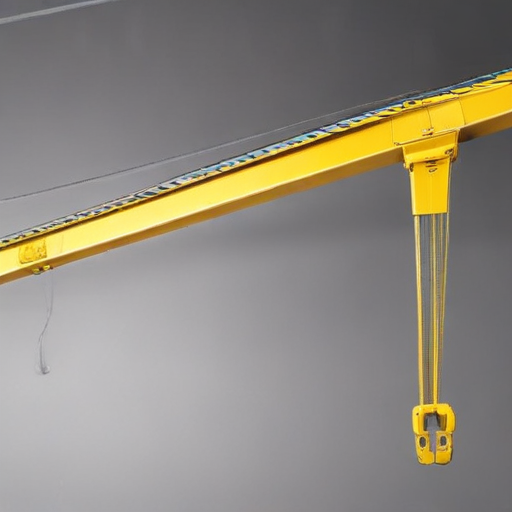
List “underslung crane” FAQ
Certainly! Here are some frequently asked questions (FAQ) about underslung cranes:
1. What is an underslung crane?
– An underslung crane, also known as an under-running or under-hung crane, is a type of overhead crane that runs on tracks mounted to the ceiling or roof structure, rather than on a floor-supported runway system.
2. Where are underslung cranes typically used?
– They are commonly used in facilities with limited floor space or where the floor must be kept clear, such as in manufacturing plants, warehouses, and maintenance shops.
3. What are the benefits of using an underslung crane?
– Some benefits include efficient use of space, flexibility in positioning loads, less obstruction on the workspace floor, and the ability to cover wide areas without needing additional support structures.
4. What weight capacities are available for underslung cranes?
– The weight capacity can vary widely, generally ranging from a few hundred kilograms to several tons. It’s essential to consult with manufacturers for specific capacity requirements.
5. How are underslung cranes powered?
– They can be powered by electric motors, manual operation, or even pneumatically, depending on the application and required lifting capacity.
6. What kind of maintenance do underslung cranes require?
– Regular inspections, lubrication of moving parts, checking the integrity of tracks and supports, and testing safety mechanisms are essential for maintaining optimal operation.
7. Are underslung cranes customizable?
– Yes, they can be customized to fit specific spatial constraints, load requirements, and operational needs. Options such as remote controls, automated systems, and special lifting attachments are available.
8. How does installation of an underslung crane differ from other cranes?
– Installation requires a robust ceiling or roof structure to support the load and crane system. Detailed engineering assessments are typically necessary to ensure safe and efficient installation.
9. What safety features are commonly included?
– Safety features may include overload protection, emergency stops, limit switches, and anti-collision systems to enhance operator safety and prevent damage.
10. What standards regulate the use of underslung cranes?
– They must comply with local and international standards such as OSHA, ISO, and ANSI, which govern safety, performance, and installation procedures.
Always consult a professional for specific needs and compliance requirements.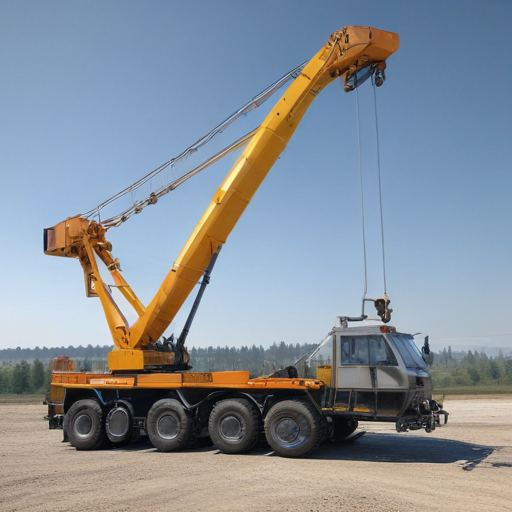
Top 10 FAQ with answer about underslung crane for Buyer Sourcing from China
Certainly! Here are the top 10 frequently asked questions (FAQ) about sourcing underslung cranes from China with concise answers:
1. What is an underslung crane?
– An underslung crane, also known as an underslung or underhung bridge crane, is characterized by its runway rail being mounted to the ceiling structure, allowing it to operate in spaces where overhead cranes are not feasible.
2. Why source underslung cranes from China?
– China offers competitive pricing, advanced manufacturing capabilities, a wide range of suppliers, and significant expertise in industrial equipment, making it a cost-effective sourcing option for underslung cranes.
3. How do I find reliable underslung crane suppliers in China?
– Utilize verified platforms like Alibaba, Made-in-China, or Global Sources. Also, consider recommendations from industry peers and reviews. Performing due diligence, including factory audits, is crucial.
4. What certifications should the supplier have?
– Look for ISO 9001 certification for quality management, CE marking for compliance with European standards, and other relevant safety certifications based on your regional requirements.
5. What are the typical lead times for underslung cranes from China?
– Lead times generally range from 30 to 90 days post-order confirmation, contingent on the complexity and customization of the crane, as well as the supplier’s current workload.
6. Can I get customizations on my ordered underslung crane?
– Yes, most Chinese suppliers offer customization to meet specific operational needs, such as different load capacities, spans, and lifting heights.
7. What are the payment terms generally offered by Chinese suppliers?
– Commonly, a 30% deposit upfront with the balance payable before shipment. Terms like Letters of Credit (L/C) or Trade Assurance (for platforms like Alibaba) are also popular.
8. How will the cranes be shipped and what are the logistics involved?
– Cranes are usually shipped in disassembled form via sea freight. Engaging a reliable logistics partner or freight forwarder ensures smooth handling of shipping and customs clearance.
9. What after-sales service can I expect?
– Comprehensive after-sales services typically include installation support, spare parts supply, technical guidance, and occasional on-site services, if required.
10. How do I ensure the quality of the underslung cranes?
– Ensure quality by specifying standards in your contract, conducting pre-shipment inspections, and possibly engaging third-party inspection services.
These responses should guide you effectively in your sourcing process from China.

